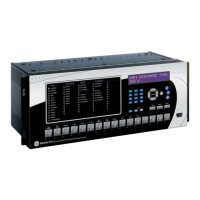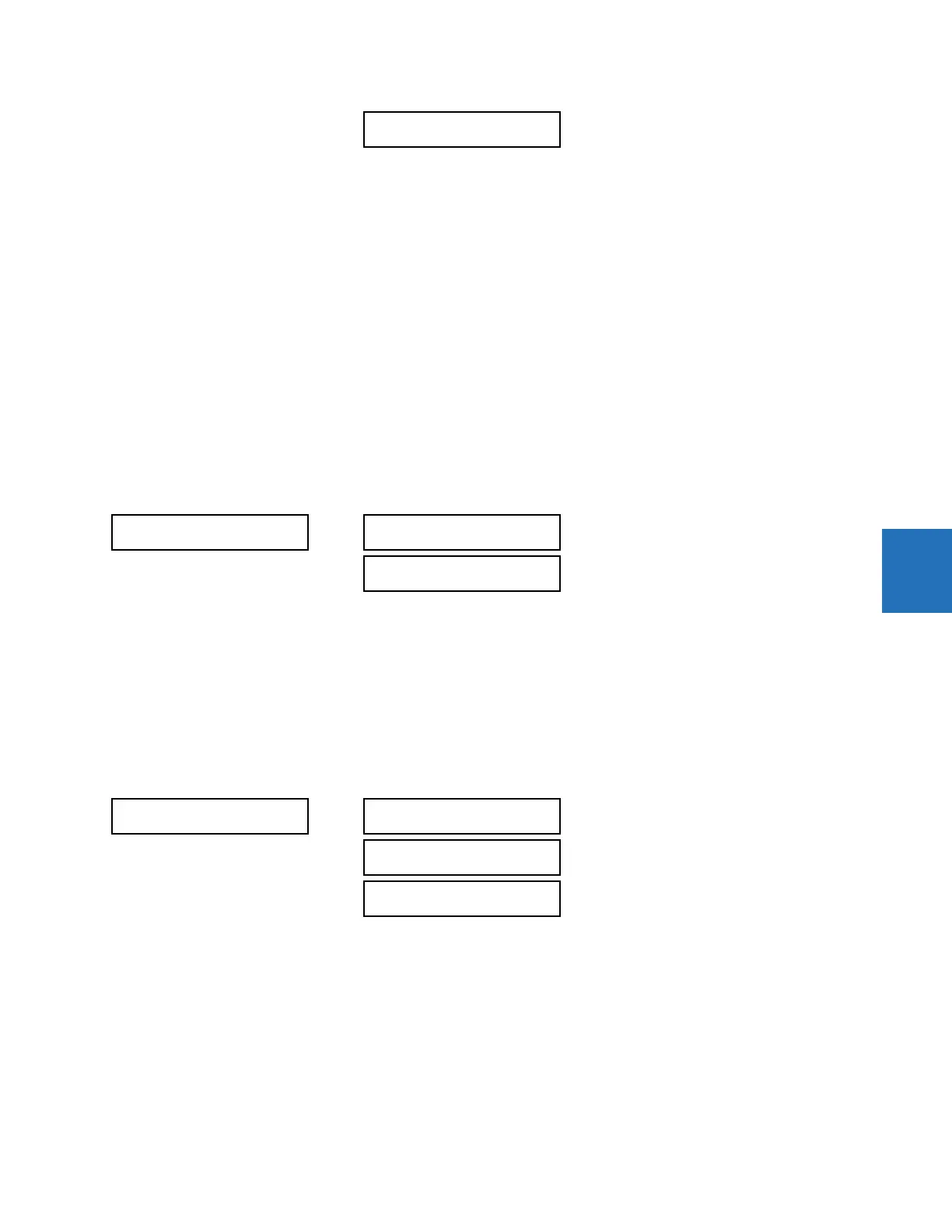CHAPTER 5: SETTINGS PRODUCT SETUP
C70 CAPACITOR BANK PROTECTION AND CONTROL SYSTEM – INSTRUCTION MANUAL 5-11
5
The following access supervision settings are available.
INVALID ATTEMPTS BEFORE LOCKOUT — This setting specifies the number of times that an incorrect password can be entered
within a three-minute time span before lockout occurs. When lockout occurs, the LOCAL ACCESS DENIED or REMOTE ACCESS
DENIED FlexLogic operands are set to “On.” These operands are returned to the “Off” state upon expiration of the lockout.
PASSWORD LOCKOUT DURATION — This setting specifies the time that the C70 locks out password access after the number
of invalid password entries specified by the
INVALID ATTEMPTS BEFORE LOCKOUT setting has occurred.
The C70 provides a means to raise an alarm upon failed password entry. If password verification fails while accessing a
password-protected level of the relay (either settings or commands), the UNAUTHORIZED ACCESS FlexLogic operand is
asserted. The operand can be programmed to raise an alarm via contact outputs or communications. This feature can be
used to protect against both unauthorized and accidental access attempts.
The UNAUTHORIZED ACCESS operand is reset with the
COMMANDS CLEAR RECORDS RESET UNAUTHORIZED ALARMS
command. Therefore, to apply this feature with security, password-protect the Command level. The operand does not
generate events or targets.
If events or targets are required, the UNAUTHORIZED ACCESS operand can be assigned to a digital element programmed with
event logs or targets enabled.
The following table outlines access level timeout settings.
SETTINGS PRODUCT SETUP SECURITY ACCESS SUPERVISION ACCESS LEVEL TIMEOUTS
These settings allow the user to specify the length of inactivity required before returning to the Restricted access level.
Note that the access level is set to Restricted when control power is cycled.
COMMAND LEVEL ACCESS TIMEOUT — This setting specifies the length of inactivity (no local or remote access) required to
return to Restricted access from the Command password level.
SETTING LEVEL ACCESS TIMEOUT — This setting specifies the length of inactivity (no local or remote access) required to return
to Restricted access from the Command password level.
Dual-permission security access
SETTINGS PRODUCT SETUP SECURITY DUAL PERMISSION SECURITY ACCESS
This feature provides a mechanism to prevent unauthorized or unintended upload of settings to a relay through the local
or remote interface.
The following settings are available through the local (front panel) interface only.
• LOCAL SETTING AUTH — This setting is used for local (front panel or RS232 interface) setting access supervision. Valid
values for the FlexLogic operands are either “On” (default) or any physical “Contact Input ~~ On” value.
If this setting is “On,“ then local setting access functions as normal; that is, a local setting password is required. If this
setting is any contact input on FlexLogic operand, then the operand must be asserted (on) prior to providing the local
setting password to gain setting access.
PASSWORD LOCKOUT
DURATION: 5 min
Range: 5 to 60 minutes in steps of 1
ACCESS LEVEL
TIMEOUTS
COMMAND LEVEL ACCESS
TIMEOUT: 5 min
Range: 5 to 480 minutes in steps of 1
SETTING LEVEL ACCESS
TIMEOUT: 30 min
Range: 5 to 480 minutes in steps of 1
DUAL PERMISSION
SECURITY ACCESS
LOCAL SETTING AUTH:
On
Range: selected FlexLogic operands (see below)
REMOTE SETTING AUTH:
On
Range: FlexLogic operand
ACCESS AUTH
TIMEOUT: 30 min
Range: 5 to 480 minutes in steps of 1

